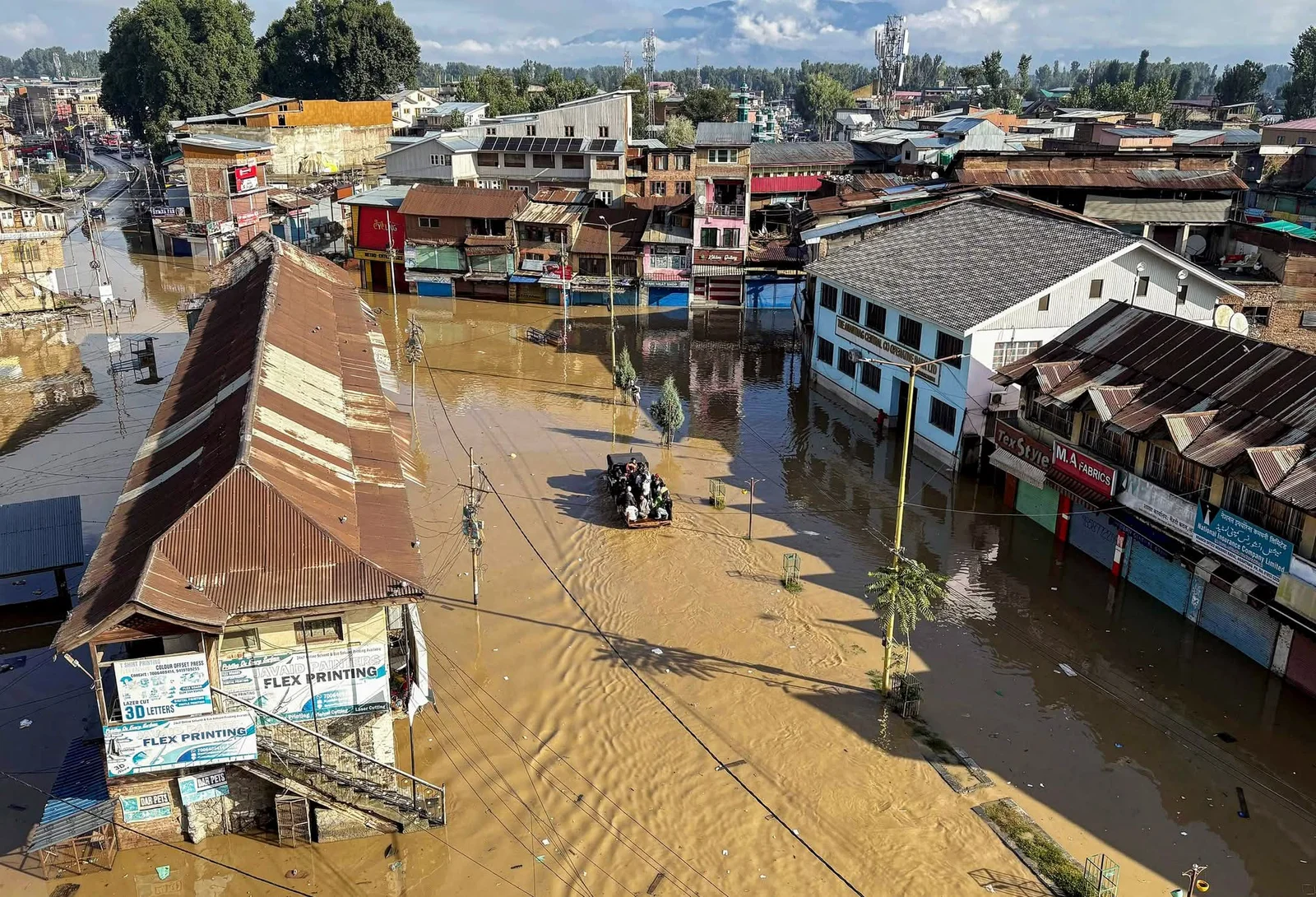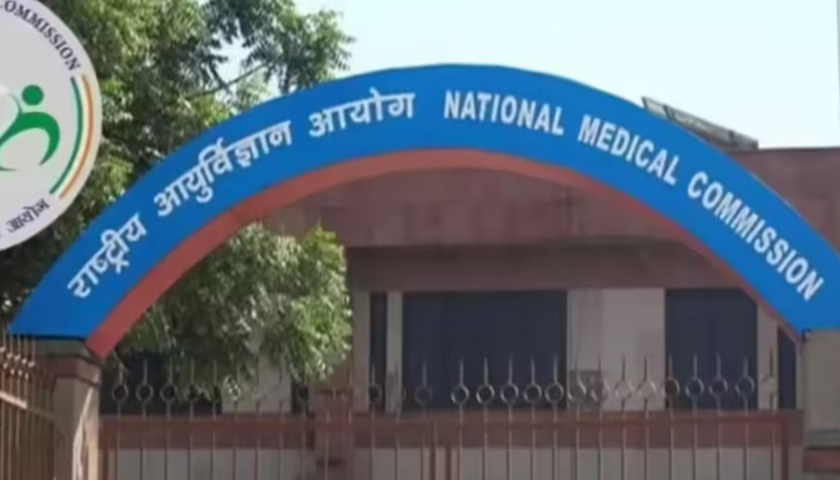Kashmir’s Recurring Flood Nightmare
By: Javid Amin | 04 Sep 2025
Every monsoon, the Kashmir Valley stands on edge. With each heavy downpour, rivers swell, embankments tremble, and memories of September 2014 resurface — when the Jhelum breached all defences, drowning Srinagar and displacing hundreds of thousands.
Eleven years later, despite crores spent on projects like the Jhelum–Tawi Flood Recovery Project (JTFRP) and the Comprehensive Flood Management Plan (CFMP), the Valley continues to live under the shadow of recurring flood threats.
Experts, residents, and environmentalists are increasingly pointing to a sobering truth: these floods are not only caused by extreme rainfall but worsened by man-made ecological destruction — especially deforestation, encroachments, and institutional neglect.
Deforestation: How Kashmir’s Natural Defences Were Stripped Away
01. Pir Panjal and Zabarwan: Losing Green Shields
The Pir Panjal, Zabarwan, and Karewa plateaus once acted as Kashmir’s natural sponges. Forests absorbed rainwater, slowed runoff, and stabilized fragile mountain slopes. Today, rampant deforestation — legal, illegal, and disguised under “development” — has eroded these shields.
-
Forest cover loss: Satellite imagery shows consistent depletion in South Kashmir, especially in Shopian, Pulwama, and Anantnag, where fruit orchards and housing colonies replace mixed oak and deodar forests.
-
Landslide triggers: With tree roots gone, slopes are unstable. Rainfall now easily dislodges soil, causing landslides and mudflows that choke streams and rivers downstream.
02. Impact on Hydrology
Without trees, rainfall that once seeped into the soil now rushes directly into rivers. The result: flashier floods — rivers rising faster, embankments breached quicker, and less time for evacuation.
“Earlier, rain would disappear into the forest floor. Now it turns into torrents,” says Nazir Ahmad, a retired forest officer from Baramulla.
Encroachments on Floodplains: A Recipe for Disaster
01. Jhelum: A River Strangled
The Jhelum River — Kashmir’s lifeline — has been robbed of its flood-carrying capacity. From Pampore to Srinagar and Baramulla, illegal colonies, shopping complexes, and government buildings have mushroomed on its floodplains.
One infamous case saw a commercial shopping complex built directly on a flood channel in Srinagar. After public outrage, authorities seized it, but no accountability was fixed on the officers who approved it.
02. The Shrinking Buffer Zones
-
Hokersar Wetland — once called the “Kidneys of Srinagar” — has lost over 60% of its area to roads, colonies, and garbage dumping.
-
Doodhganga flood channel has been constricted by concrete housing.
-
Rambiyara and Vishow Nallah floodplains are dotted with brick kilns and retail projects.
Each encroachment reduces the Valley’s ability to store excess water, pushing it into residential areas instead.
Political Complicity & Vote-Bank Urbanism
Encroachments don’t happen in silence. Locals, activists, and retired bureaucrats point to political complicity as the enabler of this crisis.
-
Vote-bank politics: Successive governments have turned a blind eye to illegal colonies, especially when politically connected builders were involved.
-
Weak enforcement: Flood zoning laws exist but remain on paper. Demolition drives are sporadic, often reversed under political pressure.
-
Wetland giveaways: Entire residential colonies in Bemina, Natipora, and Peerbagh were built on wetland soils, despite environmental warnings.
“This isn’t just poor planning,” says environmental activist Fayaz Mir. “It’s deliberate negligence, driven by greed and short-term politics.”
Climate Change: The Amplifier of Mismanagement
While human actions weaken defences, climate change is amplifying risks. Rainfall in Kashmir is increasingly erratic — shorter but more intense spells, cloudbursts, and unseasonal downpours.
-
August 2025: Sixth-highest rainfall since 1901, with 319.3 mm recorded.
-
Cloudbursts: Ganderbal, Kulgam, and Poonch have reported unprecedented flash floods in the last three years.
-
Warmer winters: Snow melts earlier, swelling rivers just as spring rains begin.
In this context, deforestation and encroachments act like removing brakes from a vehicle speeding downhill.
Institutional Failure: Where Did the Promises Go?
After 2014, promises came in plenty:
-
Dredging of Jhelum to restore carrying capacity.
-
Restoration of wetlands like Hokersar and Anchar.
-
Alternate flood channel construction for Srinagar.
-
Strict enforcement of zoning laws.
Reality paints a grim picture:
-
Dredging was half-done, abandoned midway.
-
Wetland “restoration” was tokenistic, limited to signboards and plantation drives.
-
Alternate flood channel remains on paper.
-
Encroachments grew faster than demolitions.
The result: 2015, 2017, 2018, 2022, 2025 — repeated flood scares, each one exposing institutional inertia.
What Needs Urgent Attention
If Kashmir is to escape its cycle of disaster, the focus must shift from reactive relief to proactive resilience.
-
Wetland Restoration: Launch large-scale, legally backed revival of Hokersar, Anchar, and Wular, ensuring no construction within buffer zones.
-
Transparent Zoning Enforcement: Digitize land records, map floodplains, and prosecute illegal builders and complicit officials.
-
Continuous De-siltation: Treat dredging of the Jhelum and its tributaries as an annual necessity, not an occasional project.
-
Afforestation Drives: Mobilize local communities in planting campaigns, with incentives for eco-restoration.
-
Community-Led Flood Monitoring: Train mohalla committees and youth clubs in early-warning systems and disaster drills.
Editorial Closing: A Governance Crisis, Not Just a Climate Crisis
Kashmir’s flood story is not just about rainfall, rivers, or geography. It is about choices made by institutions and politicians — choices that prioritized short-term construction over long-term safety, and silence over accountability.
Every illegal colony on a wetland, every neglected dredging project, every felled tree is part of why the Valley floods again and again.
The question now is: will Kashmir continue to treat floods as acts of God, or confront them as acts of governance failure?
If the Valley is to avoid another 2014, it must reclaim its rivers, restore its wetlands, and put ecology at the heart of planning. Anything less would be wilful negligence.




